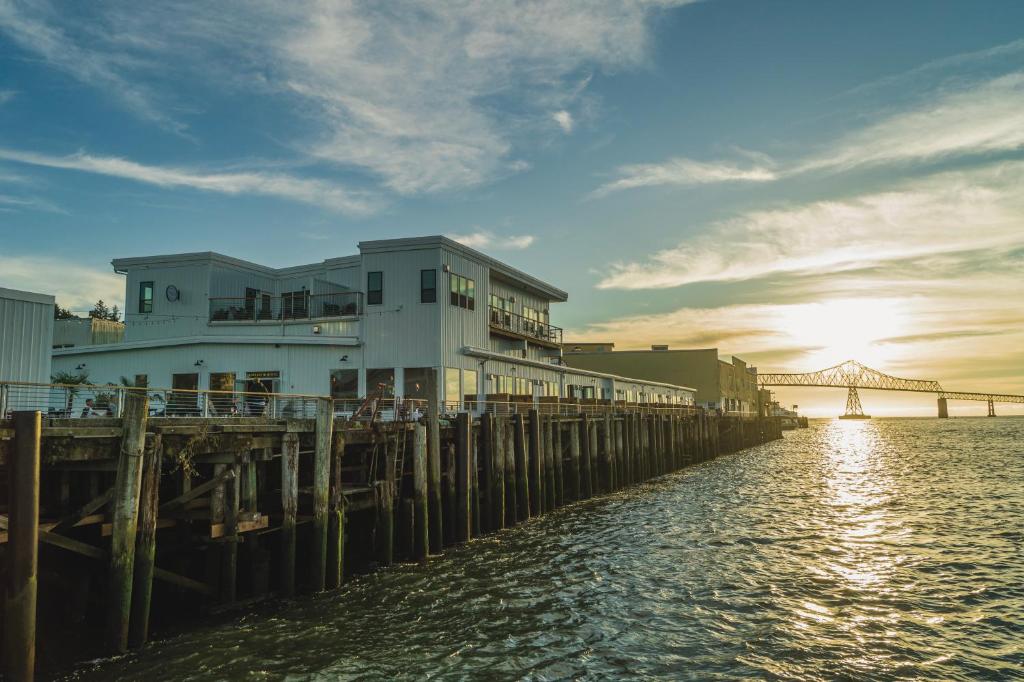Have you been following the surge in beef prices? The current surge began with shortages following temporary closures of processing plants at the start of the pandemic. Then came the successive jolts of rising fuel and feed grain prices, impacted by the Russian war in Ukraine. Now, a severe drought in the western United States has shrunk pastures and prompted ranchers to reduce their herds and cut supply by up to 20%.
I imagine the more cautious restaurateurs, faced with wholesale price hikes of up to 40% for beef over pre-pandemic costs, are probably not saying, “Let’s open a steakhouse!”
But received ideas have rarely guided chef Marc Vetri. He and his partner Jeff Benjamin had an irresistible real estate opportunity for their first Mainline project, and they delivered the bistecca luxury of an Italian grill at Fiore Rosso in Bryn Mawr.
Likewise, the ambitious team behind Bardea Food & Drink in Wilmington was already “too advanced to go back” on building Bardea Steak, says Scott Stein, whose partner, chef Antimo DiMeo, had dug deep into beef research and advanced techniques. to intensify the flavors. Their sprawling “meat kingdom” features no less than five different breeds of steer, plus elk, ostrich and kangaroo dishes that frequently arrive with a pyrotechnic fanfare – billowing smoke, tubes of bubbling lychee cream – which ensure a drama at the table.
Unsurprisingly, the price tags at both restaurants might make you gasp — reaching $168 for the 40 oz. porter for four at Fiore Rosso, and more than that for some of the chops on display in dry-aged cases at Bardea Steak. The emphasis on large-format cuts, however, is meant to encourage sharing, ultimately serving smaller portions of better meat per person than the individual steaks most American diners are accustomed to. Check the averages in both cases, ultimately between $110 and $120 per person.
It’s all part of their effort to redefine the modern steakhouse experience, along with the creative use of less expensive cuts (like zabuton or ribs) and larger menus to provide more balanced meals with vegetables. seasonal and options that hold more intrigue than the typical. quarter salad and baked potato. Both locations were filled with enthusiastic audiences. But stylistically, these two restaurants — one a study in polished minimalism, the other an irrepressible exercise in experimentation and showmanship — couldn’t be more different.
The element of surprise is the understated simplicity of Fiore Rosso. There’s not even a sign outside its front door at the back of its mall’s parking lot, where the old Tredici has been transformed into a 130-seat open space with high ceilings ( and predictable noise). It could be mistaken for a banquet hall if not for the Picasso and the Miro on loan from Vetri’s partners hanging on the walls.
You’ll know it’s a Vetri restaurant immediately from the museum-quality Berkel slicer on a pedestal near the open kitchen where longtime Osteria veteran Chef Jesse Grossman spins the wheel to shear aged prosciutto and the mortadella to be draped with creamy ricotta on a fresh focaccia. Grossman, also a Vernick household alumnus, can also be seen drizzling dry-aged rendered beef fat with a bundled herb brush over roasted steaks on the oak and charcoal grill of six feet long, which embraces almost every other item on the menu.
The main event, of course, is four cuts of steak which, with just salt and high heat, produced consistently excellent results, from the mineral complexity of dry-aged Double R Ranch ribeye ($150, 32 oz. ) to Creekstone Fiorentina bistecca, whose T-bone adds more flavor to its side of tenderloin than most tenderloins could ever dream of. The Snake River Wagyu Rib Cap is smaller than most, at just 8 oz. for $85. But it packs a richness so intense you don’t need much of it, and I prefer its firmer bite to so many other fat free Wagyu cuts.
Where Fiore Rosso stands out the most is in the rest of the menu, canned prawns cooked separately, squid and mussels topped with lemon oil, almond butter and fried puff pastry , with artichokes stuffed with stracciatella and marrow-glazed corn. The seemingly simple beef tartare, with the subtle accent of firm heart meat in the mix and an umami boost of colaturra, was also outstanding.
The handful of pasta was unremarkable, given the Vetri pedigree, although the seafood mousse-stuffed paccheri offered a clever reference to the common steakhouse lobster bisque, served here as a sauce instead of soup. I would have loved the bolognese sauce with beef if the kitchen had been more generous with the noodles. My biggest disappointment was the pastrami and spice grilled sweetbreads, a specialty I have coveted in Argentinian steakhouses which here were chewy and burnt.
A sip of my stiff Tuscan Manhattan, or the brawny Valle Reale Montepulciano d’Abruzzo from the all-Italian wine list (who needs Cali cabs?), and I was ready to move on to the many other virtues of this menu – a plump take on veal Milanese with tonnato sauce; a vibrant tuna crudo with green tomato acqua pazza. And especially the desserts of pastry chef Michal Shelkowitz. His caramel budino is so good he cheats. But I was delighted with the three-layered spumoni made with fresh strawberries, pistachios and chocolate gelati. Wrapped in a toasted strip of fluted meringue, it was festive, classic and fresh all at the same time. When updating a genre as stuck in convention as the steakhouse, this is a promising place to start.
Fiore Rosso, 915 Lancaster Ave, Bryn Mawr, 484-380-2059; fiorerossophl.com
I was so overwhelmed after my first meal that I almost didn’t go back to Bardea Steak. I had broken my own rule of not visiting a new restaurant until it was a month old – and I literally paid the price.
The restaurant’s marquee splurge, a dry-aged bistecca Fiorentina cut from the Texan descendants of the legendary Tuscan Chianina cattle, is priced by the ounce since the kitchen cuts its chops to order and sizes vary. “It’s usually around $200 and enough for four,” our server said, taking pity on my obvious struggle to multiply $6 an ounce in my head. (Why should customers do this, anyway?) But when the bill came I gulped in horror that I had been given for a in addition big 50 ounces without warning for…$300!?
I would have appreciated a double check from our otherwise excellent server before committing to this piece of XL cow – a protocol oversight that Stein says he has since corrected. But I would have appreciated it even more if the ever-experimental DiMeo had finished its R&D before the opening. His fermentation obsession with the potent Japanese koji rice mold destroyed our steak with an overly intense marinade that made it incredibly salty and tender to the point that the porter’s already supple tenderloin side had softened at the texture of the beef paste.
The marinade has since been adjusted, DiMeo says, to about a sixth of the time used on mine. But come on, boss! You cannot test at this level. Just because you can play with koji doesn’t mean you should always. (A koji-aged rib eye at Umami Steak and Sushi off Washington Square was even worse in saltiness and texture, making me now a founding member of the #NeverKojiSteak club).
Fortunately, not all of these meats are fermented in koji. You can order a bone-in Piedmontese rib-eye, an Aberdeen Angus strip that descends from the original Scottish breed, an Australian Wagyu fat-grilled over embers with ssamjang harissa, or the deeply flavorful grilled Chianina flanken. Korean style. The most fascinating reflection of DiMeo’s beef explorations is the “Butcher’s Feast” featuring less common cuts from five different breeds, including a buttery Wagyu flat iron, a tender Piedmontese zabuton and my two favorites, a Holstein picanha and the deeply complex Vaca Vieja, a Spanish breed matured years beyond the time most cattle are slaughtered.
I can’t be blamed for being thrilled to discover the latest project from one of our most creative and artistic chefs. And a much improved visit several weeks later would validate my expectations of Bardea Steak potentially becoming this region’s ultimate meat palace. The space designed by Stokes Architecture + Design is stunning, with white brick walls on walnut-colored floors and plush leather banquettes set under the gaze of a sculpted Chianina cow. The wine list is deep and premium. The cocktails are complex and inventive yet balanced – and sometimes presented with brilliance, like the sparkler that blazed atop my fine lines, offering a glimpse of the dazzle to come.
DiMeo’s creativity is showcased in its vibrant and inventive uses for the whole cow: in oxtail barbacoa nestled in smoky plantain tamales; in the veal flank tartare drizzled with clarified cacciatore broth; in a raw teres major shaved into meaty thread noodles dressed in a beef garum vinaigrette, pistachio butter and trout roe served under a smoke dome. Even the croissants here are made with a special Guernsey butter.
But the menu is also too extensive — a repertoire of 50 pieces, each meticulously composed, not even counting the separate steak menu. Some are spectacular, like the 96-layer rolled bread cube, the goat birria, or the boar and croissant riff on a mini Cuban sandwich. By the time I started tasting the elk skewers, whole piccata chick, turducken croquettes, egg-filled khachapuri, and sweet Danish-style m’hanncha pastry, it was clear that this menu had gone off the rails and needed an editor.
If DiMeo restricts its concept and refrains from adding half a dozen frills to each plate, the possibilities of this innovative restaurant are limitless. At least he can focus on perfecting his new approaches to prized chops before putting them on the menu. After a $300 fake steak, there aren’t many diners who would give this potentially exciting kingdom of meat the second chance it deserves.
Bardea Steak, 608 N. Market St., 302-550-9600; bardeeastak.com

/cloudfront-us-east-1.images.arcpublishing.com/pmn/Y66HOQPZMFFFVB74AIV3WQXTQU.jpg)





